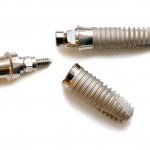
The use of dental implants is increasingly commonplace. The placement of regular diameter implants (≥ 3.75 mm to < 5 mm) requires sufficient bone for their placement and while bone augmentation techniques can be used an alternative approach is the use of narrow diameter implants (≥ 3.0 mm to < 3.75 mm).
The aim of this review was to assess if there is a difference in implant survival rate, prosthetic survival and periodontal parameters between narrow and regular diameter inserted in posterior areas of the jaw.
Methods
A protocol for the review was registered in the PROSPERO database. Searches were conducted in the Cochrane Central Register of Controlled Clinical Trials (CENTRAL), PubMed/Medline and Scopus databases. Randomised controlled trials (RCTs), clinical trials and pro- and retrospective observational studies with at least 1-year follow-up were considered with titanium-zirconium implants being excluded.Two reviewers screened and selected studies extracting data and assessing risk of bias. The Cochrane tool was used for RCTs and Joanna Briggs Institute critical appraisal tools for other designs. A pair-wise meta-analysis was conducted on the included studies.
Results
- 7 studies (1 RCTs, 1 prospective non-randomised trials, 5 retrospective studies) were included.
- 1 study used a split -mouth design and 6 a parallel group design.
- 939 implants (319 narrow and 620 regular diameter) were placed.
- 3 studies were considered to be at low risk of bias, 2 at moderate risk and one at serious risk.
- Meta-analyses found no significant differences for implant survival, prosthetic survival, mean bone loss and pocket probing depth but significantly higher bleeding on probing with narrow implants (see table)
| Outcome | No. of studies | Risk ratio (RR) or Mean difference (MD) with 95% confidence intervals |
| Implant survival | 5 | RR= 1.01 (0.98 to 1.04) |
| Prosthetic survival | 3 | RR= 0.99 (0.92 to 1.05) |
| Bleeding on probing | 2 | MD= 2.89 (0.30 to 5.48) |
| Probing pocket depth | 3 | MD = -0.03 (-0.24 to 0.17) |
| Mean bone loss | 4 | MD = -0.15 mm (-0.32 to 0.01 mm) |
Conclusions
The authors concluded: –
No differences were found in implant survival rate between narrow and regular implants. A higher BoP was identified among narrow implants, but there was no higher bone loss. It is not possible to draw definitive conclusions about the use of narrow-diameter implants in the posterior region.
Comments
The authors registered a protocol and searched 3 major databases. Only 4 of the included studies had follow up of 5 years or more. However, they did choose to exclude titanium-zirconium alloy implants which had in an earlier review by Atuna et al (Dental Elf – 14th Apr 2016) been shown to be as effective as regular titanium implants for up to 36 months. Of the 7 included studies 5 were of a retrospective design which is more prone to bias. In addition, there was a lot of variation across the studies in terms of type of prosthetic restoration, implant abutment surface and follow up period. The Al-Johany classification for implant diameters was used and with the exception of bleeding on probing no differences between narrow and regular implants were demonstrated. While the findings suggest no differences between the two types of implant, the limited number of studies available their relatively small size and mainly retrospective nature mean that the findings should be viewed cautiously. Well conducted and reported prospective trials of appropriate size and duration need to be conducted to provide better quality evidence.
Links
Primary Paper
Pesce P, Del Fabbro M, Modenese L, Sandron S, Francetti L, Isola G, Canullo L, Menini M. Influence of implant diameter on implant survival rate and clinical outcomes in the posterior area: a systematic review and meta-analysis. BMC Oral Health. 2023 Apr 21;23(1):235. doi: 10.1186/s12903-023-02962-8. PMID: 37085829; PMCID: PMC10122303.
Other references
Al-Johany SS, Al Amri MD, Alsaeed S, Alalola B. Dental Implant Length and Diameter: A Proposed Classification Scheme. J Prosthodont. 2017 Apr;26(3):252-260. doi: 10.1111/jopr.12517. Epub 2016 Jul 5. PMID: 27379723.
Dental Elf – 14th Apr 2016
Narrow dental implants – good survival at 2 years suggests review
Dental Elf – 11th Mar 2014
Higher failure rates for narrow dental implants suggested by review
